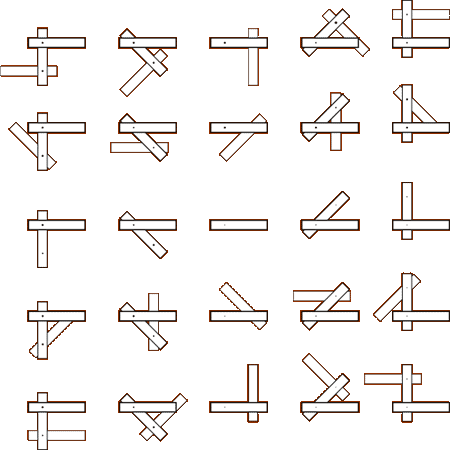 |
| overview
trundle v1.2 anatomy images behavior interaction + movement trundle v1.1 anatomy images behavior trundle v1.0 anatomy images
|
 The space of Trundle’s possible positions (top view). Humans anthropomorphize inanimate objects. We see creatures in the clouds, faces in knots in a plank of wood, and easily project intention onto simple moving objects such as a paper blowing in the wind. Trundle utilizes this phenomena for its interaction with people. It communicates its internal state so that people will know how to respond to its movement. Trundle is able to communicate through its form (body language) and through the quality of its movement. In the final implementation, quick and short movements are used to represent discomfort and long, slow movements are utilized to represent calmness and curiosity. A closed physical form is used to show a lack of engagement and a smooth, constantly opening and closing form is used to convey interest. |
| Casey
Reas
( reas@media.mit.edu ) | |